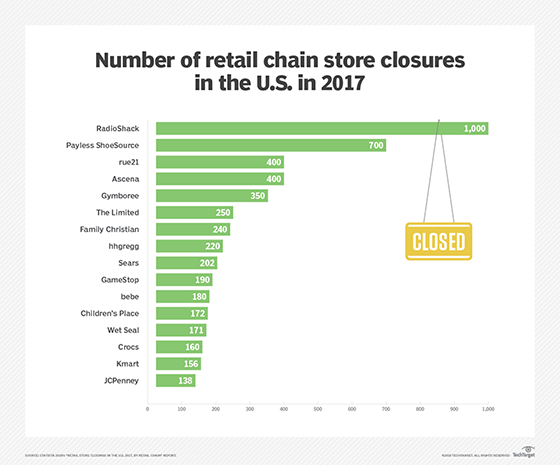
Successful retail robots improve the augmented workforce
The future of AI in the workplace relies on the successful integration of humans and bots. Retail use cases for cobots point to customer engagement and labor tasks.
Brick and mortar retail stores have been increasing their usage of collaborative robots -- commonly referred to as cobots. Cobots are physical, hardware devices that are intentionally designed to operate in close quarters with humans in a wide range of environments, from warehouses, store floors, hospital and hotel hallways, to office buildings. While robots have traditionally performed many remedial, easily automated tasks, retailers are seeing benefits implementing retail robots for evolving use cases.
Increasingly, grocery stores, home improvement stores, big box retailers, restaurants and many other physical business establishments with a customer-centric business model are introducing cobots into their operations.
Robots engaging with customers
Since cobots can safely work alongside humans, companies are finding use in placing them on the frontlines of customer engagement. Cobots are popping up in a wide range of customer interactions, including aiding at the check-out line, cleaning stores, and performing inventory management. Home improvement store Lowes released its autonomous retail robot "LoweBot" in 2016 to roam store floors and help customers with simple questions in a variety of languages, as well as assist with inventory monitoring on shelves. This engagement with customers is allowing the bot to answer more routine questions -- freeing up employees to help with more complex questions, requests and tasks.
In 2017, Walmart deployed shelf-scanning cobots in 50 locations around the US. These cobots autonomously roam store floors to check inventory, but they can also scan shelves to make sure prices are correct or stock is in order, or identify misplaced items. Earlier this year, Walmart added about 1,500 floor-cleaning custodial bots that are able to autonomously scrub store floors, check for spills, or alert staff to larger messes. These cobots carefully avoid contact with humans in order to perform their function -- to clean up spills throughout the day.
Increasingly, customers are finding robots roaming grocery stores. The regional grocery store chain that owns Stop & Shop, Giant Food Stores and Giant Martin's stores, introduced "Marty the Robot" to roughly 500 stores in 2019. This retail robot roams the store looking for spills, food in aisles or misplaced items, and issues an alert to human workers for any intense clean up.
Taking it to the streets
In addition to engaging and interacting with customers inside stores, companies are taking the use of cobots to the streets to help with delivery. The pizza chain Domino's piloted a pizza delivery bot in select locations around the world to deliver hot pizza to customers within a one mile delivery radius of select stores. The company partnered with bot developer Starship Technologies to build delivery bots that aid with the problems that arise during the last mile delivery. Moving at a leisurely pace of 4 mph and with the ability to hold four or five pizzas, these bots can safely roll down city sidewalks any time to deliver pizza to hungry customers.
Similarly, retail juggernaut Amazon continues to look to artificial intelligence for ways to lower prices and improve delivery times. To help meet growing consumer demands, Amazon has been experimenting with a variety of autonomous and semi-autonomous vehicles such as drones and robots to deliver packages to customers.
Earlier this year, Amazon announced the Scout sidewalk delivery robot, with an initial deployment for deliveries in a neighborhood near Amazon HQ in Seattle. These autonomous robots are able to navigate sidewalks while avoiding pedestrians and curious animals that it encounters. The bot is weatherproof to allow it to operate in rainy Seattle conditions. Most importantly, Amazon is exploring Scout as the answer to the growing problem of package theft by forcing the package to stay locked at a customer's doorstep until they arrive home to unlock their package from the bot.

The future of collaborative work
By introducing cobots into retail operations, companies are looking to streamline labor, save on costs and deliver a more consistent customer experience. With the slow introduction of robots that have cognitive capabilities, companies will naturally rethink their usage of human labor for a number of activities. Many stores are already using cobots for mundane, dirty, or repetitive tasks in order to free human workers up for higher value tasks such as engaging with customers and answering more complex questions. Like most AI, cobots are currently only used in streamlined, programmable robotic tasks and have not yet ventured into creative or sentient work.
As with all things, adoption and widespread acceptance of technologies such as retail robots takes time. People need to feel comfortable, not threatened, by these bots in their work and retail environments. While cobots do not have the expertise and specialty knowledge of their human counterparts, they will be used to augment existing human retail operations and provide additive value to simple tasks and requests.
With increased use and acceptability in the enterprise, cobots can be a permanent, widespread augmentative tool for helping humans perform work more efficiently.







